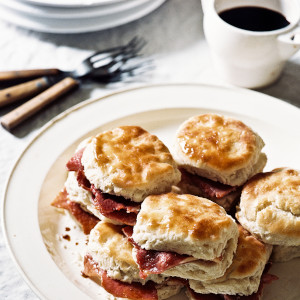Chefs at oysters bars across the South put a lot of thought into their menus—ever-changing selections that showcase freshness, size, brine, flavor, and region. Chef Davis King of BeetleCat in Atlanta samples the oyster arrivals daily. Mike Lata of the Ordinary in Charleston gets the lowdown from his expert shuckers on his hyper-local haul.

But when it’s time to order, it’s up to the guest to narrow down the options.
“There are three main talking points when it comes to oysters,” says Jesse Sandole of Charleston’s 167 Raw. “Size, location, and salinity.” Those umbrella topics can guide your order, and King recommends hitting your local oyster hotspot at happy hour for optimum exploration. “We consider what we have the most of that day, so guests might have an opportunity to try a more expensive oyster for a bit less,” he says. Ideally, plan to order multiple rounds to sample widely and hone in on your favorites.

Beyond that, it’s a matter of preference, but here’s how the pros do it: King’s ideal platter consists of three oysters from Prince Edward Island, with just a little bit of lemon; three from the Gulf Coast with cocktail sauce, lemon, and mignonette on a toasted saltine; and finally, three from Maryland or Virginia, with just a bit of mignonette. For Lata’s part, he’s going full local, with an eye to finding the freshest haul possible; even though he’s partial to East Coast oysters, he’ll load up on West Coast oysters if that’s where he happens to be. And he might use just a few drops of mignonette if he puts anything on the oysters at all. Sandole, meanwhile, stays true to his roots. He’s from New England, so he’s making sure he’s got ice-cold, salty oysters from Nantucket and Wellfeet, with maybe a few from the Carolinas thrown in—and he’s dressing them all with a touch of mignonette and a few drops of lemon.
Below, find ten tips for building your own perfect platter.
Consider size.
All good oyster cards have a size listed, King says, and it may be best for first-timers to start with smaller oysters, since “the larger the oyster, the more, let’s say, interesting the texture can be.” Sandole has observed that usually, a guest either likes smaller or larger, without much in between, and should order accordingly.
Think about brine.
If you want salinity, the East Coast is your best bet. The West Coast produces oysters that are less salty and have more snap, meat, and mouthfeel, Lata says. Briny is a safer bet for beginners, King says—“you know what you’re getting yourself into, and salt is the most approachable flavor in an oyster.”
Go for a regional mix.
Eating an oyster is like eating a bite of a place, and King likes to mix it up on a platter. He finds oysters from Prince Edward Island, for example, to be clean with a mild salinity, while Gulf Coast harvests are sweet and creamy and oysters from Maryland or Virginia tend to be very salty with a clean finish. West Coast oysters are a different beast altogether and tend to be larger, meatier, and more vegetal, Lata says.
Or, if you’re somewhere coastal, keep it local.
If you’re in a coastal spot like Charleston, make sure to sample the local goods, Lata points out. “It’s not that oysters can’t be shipped; they can,” he says. “But a local oyster will likely have a harvest date much closer to when you’re eating it.” Plus, oysters are so representative of place that it’s a great way to taste where you are.
The season can make a difference.
Sandole thinks about what’s going on in the oyster’s life cycle at the time he’s sourcing or ordering them. Fall is best for New England oysters because they’re fattening up for the colder months, but he finds the oysters fattiest and best in winter and springtime in Charleston. “The benefit of eating oysters on the East Coast is that you can always find a location where they’re in their prime for that part of the year,” he says.

Don’t be afraid to go naked.
That West Coast oyster that costs $6? Maybe you don’t want to drown it in cocktail sauce, King says. On the first try in particular, it’s good to let an oyster shine on its own. Lata agrees. “The nuances in flavor are so slight that most times, I don’t really want to put anything on it,” he says. “On my second dozen, though, I might start to play around and junk them up.”
Keep your dressing to yourself.
Lata has a pet peeve: That person at the table who takes the lemon and nobly squeezes it over all the oysters. “That’s like seasoning somebody else’s food before they get a bite of it,” he says. “So rude!” Let each person decide how they want their oysters (Lata himself almost never puts any lemon at all; he finds it too acidic).
When in doubt, ask for help.
All three chefs agree: Ask your server, or even better, the shucker, for their advice in curating a platter. “I might say, ‘we don’t like big oysters, and we like salty oysters,” Lata says. “Have the shucker pick out a dozen with however many varieties they’d like to share—because at any point in time, there’s going to be an oyster or two that they think is the best that day.”








